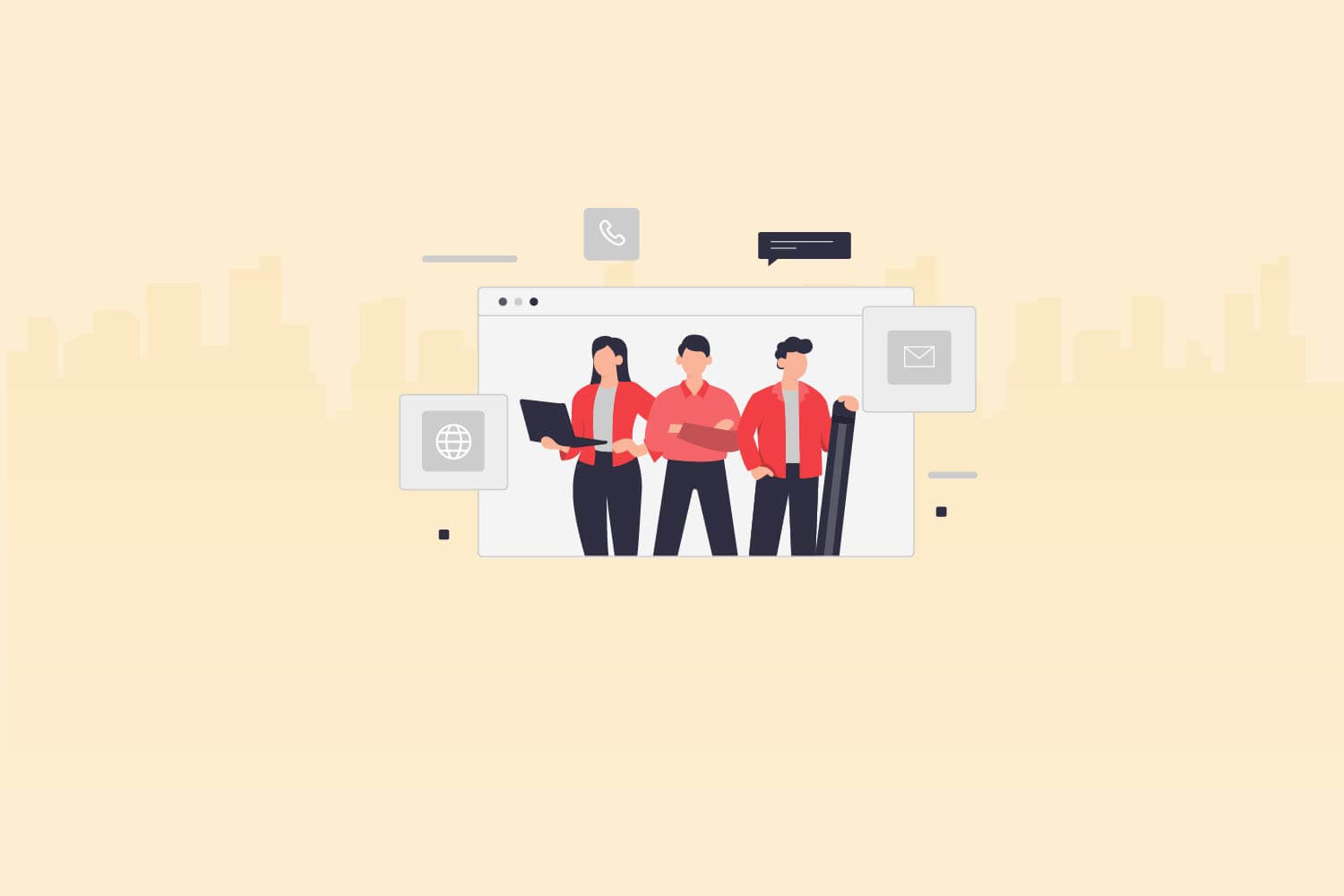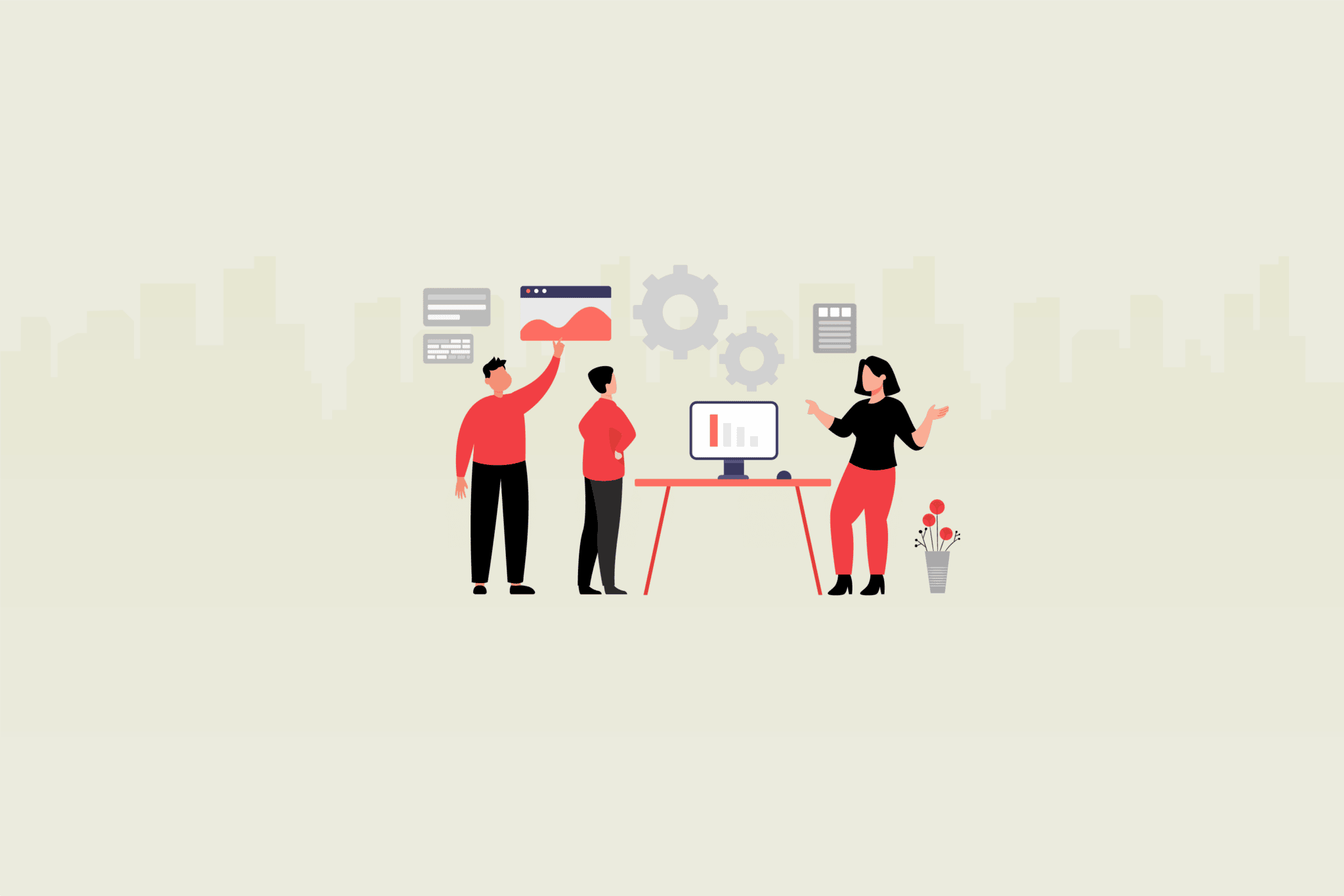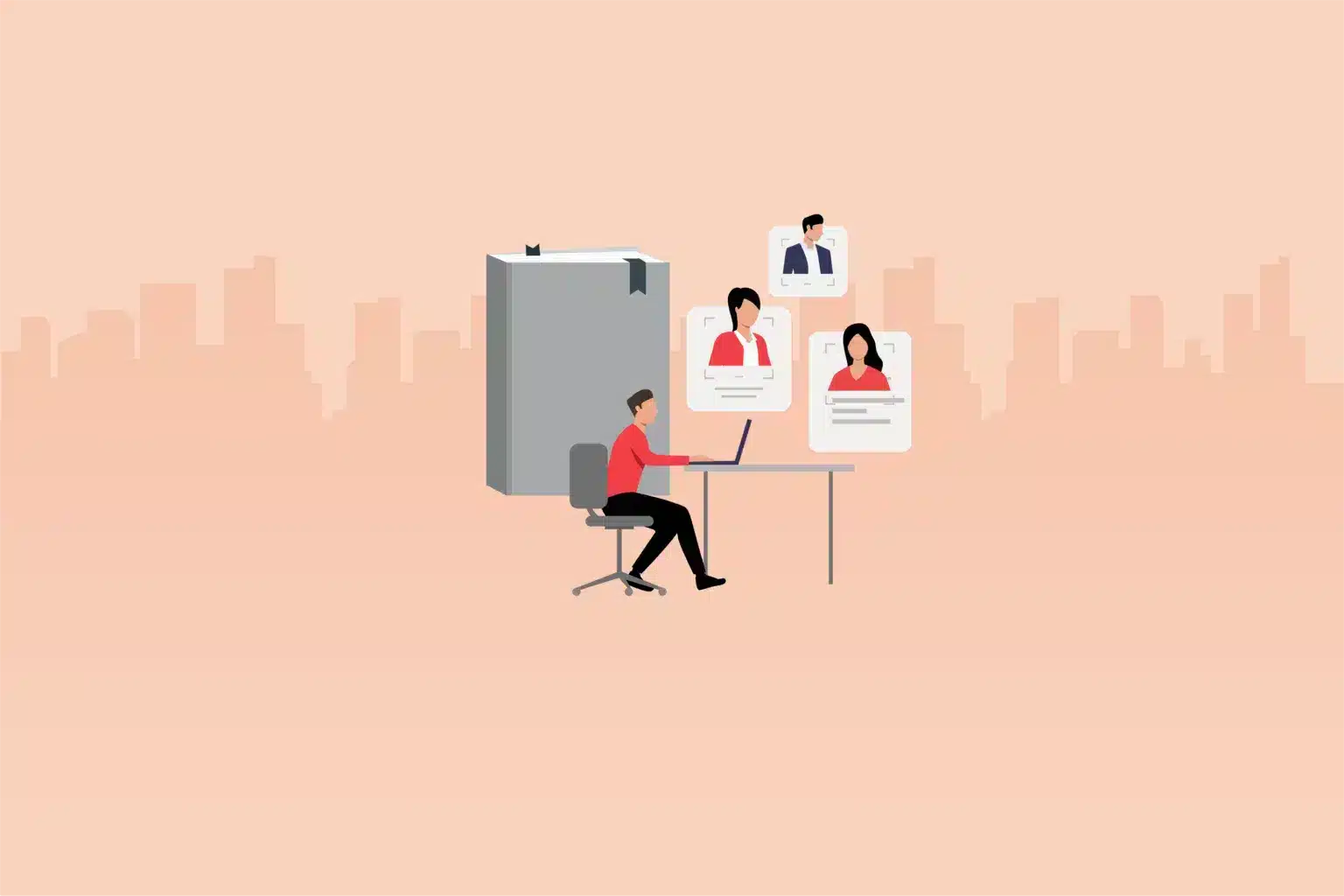In an era marked by rapid technological advancements, shifting demographics, and evolving market dynamics, the concept of work is undergoing a transformative journey. At the heart of this transformation lies the pivotal role of workforce planning. This strategic practice not only ensures a harmonious alignment between an organization’s human resources and its strategic goals but also wields the power to shape the very future of work itself.
Organizations that embrace workforce planning for the future of work are 2.4 times more likely to adapt successfully to new technological advancements and changing industry landscapes, as reported in a study by McKinsey & Company.
Workforce planning goes beyond mere headcount management. It’s about harnessing the insights gleaned from data analytics, predictive modeling, and strategic foresight to craft a workforce that’s not only agile and adaptable but also equipped with the skills and diversity necessary to thrive in an ever-changing landscape. As businesses navigate the challenges and opportunities of today’s environment, workforce planning emerges as a compass that guides them toward success.
The evolution of workforce planning
In the annals of business history, the practice of workforce planning has undergone a remarkable evolution, morphing from rudimentary staffing strategies to a sophisticated, data-driven discipline that shapes the very fabric of modern organizations. The journey of workforce planning provides a glimpse into how companies have adapted to the ever-changing dynamics of the workforce and how this evolution has led to a strategic approach that is integral to an organization’s success.
Traditionally, workforce planning primarily involved meeting immediate staffing needs, often reactionary in nature. Organizations focused on filling roles as they opened up, with little consideration for long-term goals or the broader strategic landscape. However, as industries grew more complex and the business environment became increasingly volatile, it became evident that this approach was inadequate.
The advent of technology played a pivotal role in the evolution of workforce planning. The proliferation of data analytics tools enabled organizations to move beyond gut feelings and intuition, paving the way for data-driven decisions. Businesses started leveraging data to forecast future workforce requirements, identifying skills gaps, and understanding the demographic makeup of their workforce. This shift towards data-driven decision-making marked a turning point in the trajectory of workforce planning.
In recent years, workforce planning has embraced a holistic approach that extends beyond mere headcount management. It encompasses strategic foresight, aligning workforce composition with an organization’s long-term goals. With a focus on skill development, companies are no longer just hiring based on current needs but are investing in the growth and adaptability of their employees.
As the workforce itself evolves—with the rise of remote work, the entry of new generations, and the integration of AI and automation—workforce planning continues to adapt. The focus is now on crafting agile and diverse teams that can navigate ambiguity and change. This shift from reactive staffing to proactive, strategic workforce planning underscores the transformational journey that has brought us to this point—a point where workforce planning is not just a function but a cornerstone of future-oriented business strategies.
Challenges and opportunities in workforce planning

In the tapestry of workforce planning, challenges and opportunities are woven inextricably, presenting organizations with a complex interplay of factors that can shape their trajectory. The evolving landscape of work has brought about shifts that demand a fresh perspective on how workforce planning is approached, offering both hurdles to overcome and avenues for innovation.
One of the foremost challenges in contemporary workforce planning lies in addressing the ever-widening skills gap. As industries digitize and new technologies emerge, the demand for specialized skills has surged, leaving organizations grappling with a scarcity of talent equipped to meet these demands. Workforce planning must take on the role of a strategic navigator, identifying the skills of the future and proactively investing in the development of current employees or new hires.
Demographic shifts are another facet that casts a shadow on workforce planning. The aging workforce, coupled with the influx of younger generations, poses the intricate task of managing a diverse workforce with differing needs, expectations, and work styles. The challenge lies in fostering an environment that bridges generational gaps, allowing each cohort to contribute meaningfully while benefiting from the wisdom of experience and the fresh perspectives of youth.
The ascendancy of remote work has added a layer of complexity to the workforce planning puzzle. While it offers unprecedented flexibility, it also calls for strategies that ensure productivity, maintain team cohesion, and address potential feelings of isolation. Workforce planning must find ways to strike the delicate balance between the benefits of remote work and the collaborative synergy that in-person interactions can foster.
Yet within these challenges lie opportunities for organizations to excel. By actively addressing skills gaps, companies can position themselves as pioneers in their industries, embracing innovation and adapting swiftly to market changes. Embracing the diversity of a multigenerational workforce enriches an organization’s perspective, fostering a culture of inclusion that celebrates varied viewpoints.
The challenges and opportunities in workforce planning are two sides of the same coin—a coin that, when well-invested, can yield transformative growth. Navigating these waters demands a proactive mindset, where organizations embrace change, nurture talent, and forge a path that leads not only to business success but also to the evolution of work itself.
The benefits of effective workforce planning
In the intricate tapestry of organizational dynamics, effective workforce planning emerges as a golden thread that weaves together multiple advantages, each contributing to the resilience and success of businesses. Beyond mere operational efficiency, this strategic practice yields a spectrum of benefits that reverberate throughout an organization, enhancing its ability to thrive in a rapidly changing world.
One of the most tangible benefits of effective workforce planning is the improved allocation of resources. By aligning the composition of the workforce with the strategic objectives of the company, businesses can ensure that every role, skill, and capability serves a purpose in driving the organization forward. This synergy minimizes redundancy, prevents skill shortages, and optimizes resource utilization, ultimately leading to enhanced productivity and streamlined operations.
Moreover, workforce planning fosters a heightened agility that empowers organizations to respond adeptly to market shifts and industry trends. As businesses evolve, so do their talent requirements. With a well-calibrated workforce plan, companies can swiftly pivot to meet new demands, capitalize on emerging opportunities, and navigate challenges with resilience.
Cost savings also come to the forefront as a significant advantage of effective workforce planning. Through meticulous analysis and proactive decision-making, companies can mitigate unnecessary labor costs, reduce turnover rates, and minimize the expenses associated with recruitment, training, and onboarding. This not only enhances the bottom line but also positions organizations to invest in growth and innovation.
Perhaps one of the most enduring benefits is the impact on talent acquisition and retention. A well-crafted workforce plan that emphasizes skill development and growth opportunities enhances employee satisfaction, engagement, and loyalty. When employees feel that their aspirations align with the organization’s trajectory, they are more likely to invest their talents and energy, ultimately contributing to higher performance levels and decreased turnover.
In the mosaic of modern business strategies, effective workforce planning stands as a masterpiece that not only enhances operational efficiency but also shapes the very essence of an organization’s culture, trajectory, and success. Its capacity to optimize resources, boost agility, generate cost savings, and nurture talent cements its position as a linchpin in building a sustainable and prosperous future for businesses.
Strategies for successful workforce planning
In the intricate dance of business strategy and human capital, successful workforce planning emerges as a choreography of proactive strategies and intricate foresight. As organizations navigate the complexities of the modern work landscape, embracing workforce planning as a driving force requires a deliberate and strategic approach that goes beyond mere headcount management.
At the heart of effective workforce planning lies data-driven insights. Leveraging advanced analytics, organizations can unearth patterns, trends, and projections that serve as the compass for informed decision-making. This entails not only understanding current workforce composition but also predicting future skills demands, identifying potential gaps, and aligning these insights with the overarching business strategy.
Scenario planning is another cornerstone of successful workforce planning. The volatile nature of markets and industries necessitates the ability to envision various plausible futures. By creating scenarios that encompass different possibilities, organizations can develop strategies that are robust, flexible, and adaptable, ensuring that they are well-equipped to navigate uncertainty with confidence.
A strategic focus on skill development and upskilling is pivotal in the modern work landscape. As roles evolve and industries transform, a culture of continuous learning becomes paramount. Workforce planning should prioritize the identification of skills gaps and offer tailored learning pathways to empower employees to acquire the competencies required to stay relevant.
Perhaps equally crucial is adopting a collaborative approach to workforce planning. Engaging HR, department heads, and even executives in the planning process ensures diverse perspectives and insights are considered. This collaborative effort not only enriches the planning process but also fosters a sense of ownership and alignment throughout the organization.
In the symphony of workforce planning strategies, data-driven insights, scenario planning, skill development, and collaboration emerge as the virtuoso notes that harmonize to create a melody of success. Embracing these strategies empowers organizations to navigate the complexities of the modern work landscape, ensuring that the workforce is not only equipped to thrive but also to shape the future.
Implementing workforce planning in your organization

The journey from strategy to execution is a pivotal one, and implementing effective workforce planning requires a well-orchestrated symphony of actions. While the concept may be clear, translating it into tangible results demands a deliberate approach that harmonizes various components, from technology to team collaboration.
To embark on this journey, the first step is defining clear and actionable steps to get started. This involves identifying key stakeholders, understanding the existing workforce dynamics, and setting measurable goals that align with the overarching business strategy. Having a well-defined roadmap ensures that the implementation process remains focused and purposeful.
Selecting the right tools and technologies is pivotal in modern workforce planning. The availability of data analytics platforms, workforce management software, and predictive modeling tools empowers organizations to make informed decisions. However, the chosen tools should be in alignment with the organization’s unique needs and capabilities.
Building a cross-functional workforce planning team is crucial. This interdisciplinary team should comprise individuals from HR, finance, operations, and departmental representatives who bring their diverse expertise to the table. Collaborative effort ensures that insights are comprehensive and that potential blind spots are minimized.
Once the groundwork is laid, continuous monitoring and adjustment become imperative. The business landscape is dynamic, and workforce planning must be responsive to changes. Regularly reviewing the effectiveness of the strategies, analyzing outcomes, and adapting plans as needed ensures that the organization remains agile in the face of evolving challenges and opportunities
Implementing workforce planning is not a one-time event but an ongoing commitment to align human capital with strategic intent. By meticulously designing a roadmap, leveraging appropriate technology, fostering cross-functional collaboration, and maintaining adaptability, organizations can cultivate a workforce that doesn’t merely respond to change but actively shapes it.
Case studies
The efficacy of workforce planning comes to life through the lens of real-world case studies, where organizations have harnessed its power to navigate challenges, seize opportunities, and achieve remarkable outcomes.
Take, for instance, a global technology firm that seamlessly transitioned to remote work during a global crisis. Their workforce planning efforts enabled them to swiftly equip employees with the necessary tools and support to maintain productivity from home. By analyzing remote work trends and understanding the unique needs of their workforce, they not only ensured business continuity but also fostered a culture of flexibility that resonated with employees.
A new start-up’s experience showcases the impact of strategic planning in addressing skills gaps. In an ever-evolving tech landscape, they identified a growing demand for AI and data science skills. Through predictive modeling and skill gap analysis, they initiated targeted training programs and partnerships with educational institutions. This proactive approach not only filled their skills deficit but also positioned them as industry innovators.
An SMB journey emphasizes the role of workforce planning in creating an inclusive workplace. Recognizing the importance of diversity, they leveraged workforce data to promote equitable hiring practices, eliminate biases, and ensure representation at all levels. This commitment not only enriched their work environment but also resonated positively with customers and stakeholders.
These real-world examples underscore the transformative potential of workforce planning. From adapting to change and addressing skills gaps to fostering diversity and inclusion, each case study offers a unique perspective on how organizations can leverage workforce planning to not only navigate challenges but also steer the course towards a future of growth, resilience, and innovation.
The future of workforce planning
As we peer into the horizon of the future of work, the contours of workforce planning are destined to evolve further, adapting to the swift currents of technological advancement, societal shifts, and changing employee expectations.
Artificial Intelligence (AI), automation, and machine learning are poised to reshape workforce planning. These technologies can analyze vast datasets, predict workforce trends, and even suggest optimal strategies. Organizations that embrace AI-powered analytics will have a competitive edge in crafting agile workforce plans that respond dynamically to market changes.
In this future landscape, continuous learning and adaptability will become non-negotiable. Skills that are relevant today might become obsolete tomorrow. Workforce planning will pivot towards creating a culture of lifelong learning, equipping employees with tools to upskill and reskill as needed. This not only bolsters employee satisfaction but also prepares businesses for rapid shifts in skills demands.
Furthermore, workforce planning will continue to play a pivotal role in fostering resilience. The ability to predict and plan for disruptions, whether due to technological shifts, economic downturns, or unforeseen crises, will become a hallmark of successful organizations. Those with agile workforce plans will be better equipped to navigate uncertainty without compromising on productivity or talent retention.
In this ever-evolving landscape, the role of workforce planning isn’t just to anticipate the future but to actively shape it. By harnessing the power of technology, nurturing a culture of adaptability, and fostering strategic resilience, workforce planning emerges as the compass guiding organizations through uncharted territories. It’s not merely a tool for operational efficiency but a visionary force that drives businesses to not only survive but thrive in the dynamic future of work.
Shaping the future of work through workforce planning
In the intricate symphony of modern business, workforce planning emerges as a conductor, orchestrating harmonious interactions between human potential and strategic goals. As we reflect on the multifaceted journey we’ve explored, one truth becomes evident: the future of work is a canvas waiting to be painted, and workforce planning wields the brush.
The transformation of workforce planning from a reactive headcount management practice to a dynamic, data-driven strategy underscores its indispensable role in shaping the destiny of organizations. The journey has been one of evolution, marked by adaptability to technology, foresight into future needs, and a deeper understanding of the nuances of a diverse and evolving workforce.
The challenges and opportunities woven into workforce planning have catalyzed innovation and introspection. Addressing skills gaps, embracing generational diversity, and navigating the realm of remote work have paved the way for organizations to become not just adaptable, but trailblazers in their industries.
As businesses embrace the benefits of workforce planning, from efficient resource allocation to enhanced agility, a culture of continuous learning and inclusivity becomes ingrained. The stories of real-world successes exemplify how the strategic interplay of data, scenario planning, and collaboration can bring about transformative outcomes.
Gazing toward the future, it’s evident that workforce planning will remain an essential compass in a world where AI, automation, and dynamic market shifts are the norm. By fostering adaptability, resilience, and a commitment to lifelong learning, organizations will not only navigate the challenges ahead but actively shape the landscapes they traverse.
In the ever-evolving tapestry of work, the story of workforce planning is a testament to the power of strategy, innovation, and human ingenuity. As we turn the page toward the next chapter, let us seize the brush and paint a future where organizations thrive, employees flourish, and the melody of success resounds through the corridors of change.
Conclusion
As we stand at the crossroads of the future of work, one thing is abundantly clear: workforce planning isn’t a mere trend; it’s an imperative. The success of organizations hinges on their ability to anticipate, prepare for, and respond to the demands of an increasingly complex world. Through data-driven insights, scenario planning, and a commitment to continuous learning, workforce planning equips businesses to navigate uncharted waters with confidence.
Embracing workforce planning means embracing change, inclusivity, and innovation. It’s about fostering a culture where employees are empowered to upskill, where diversity and inclusion is celebrated, and where strategic decisions are grounded in robust analytics. The future of work belongs to those who dare to envision it, and workforce planning provides the roadmap to that vision.
In this journey, companies aren’t just shaping their own future but are collectively contributing to the evolution of industries, economies, and the very nature of work itself. So, let us embark on this path, harnessing the power of workforce planning to sculpt a future where organizations thrive, talent flourishes, and innovation knows no bounds.
Testlify offers a range of assessments and challenges that allow you to gauge candidates’ knowledge, problem-solving skills, and creativity in real-world scenarios. With our extensive test library, you can objectively evaluate candidates’ abilities, ensuring you shortlist the most talented individuals efficiently. Ready to unlock the potential of your hiring process with our talent assessment tool? Book a free 30-minute live demo with Testlify. Our expert team will guide you through the platform, showcasing relevant skill tests tailored to your organization’s needs. With our support, you can streamline candidate selection, saving valuable time and resources.







